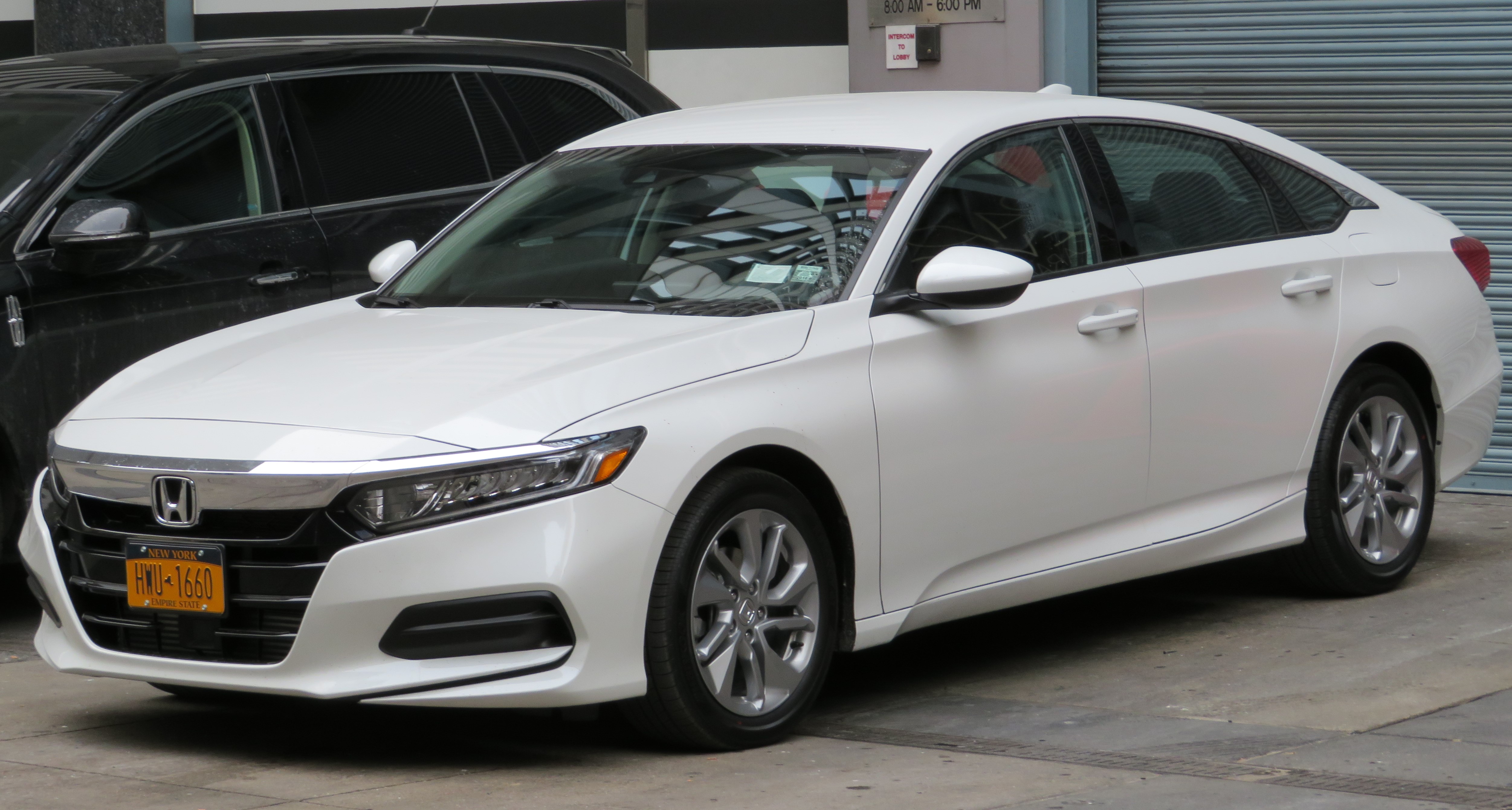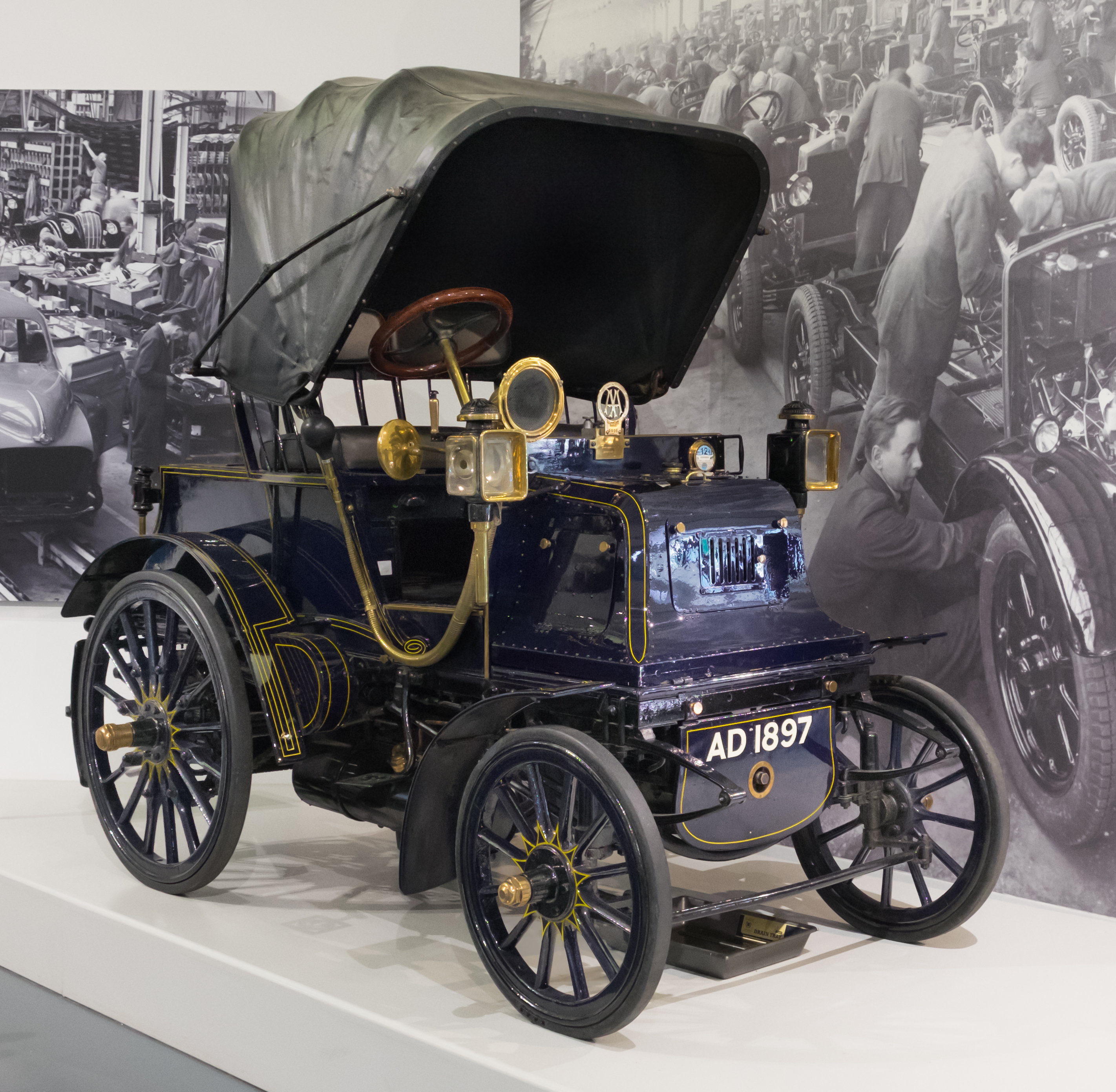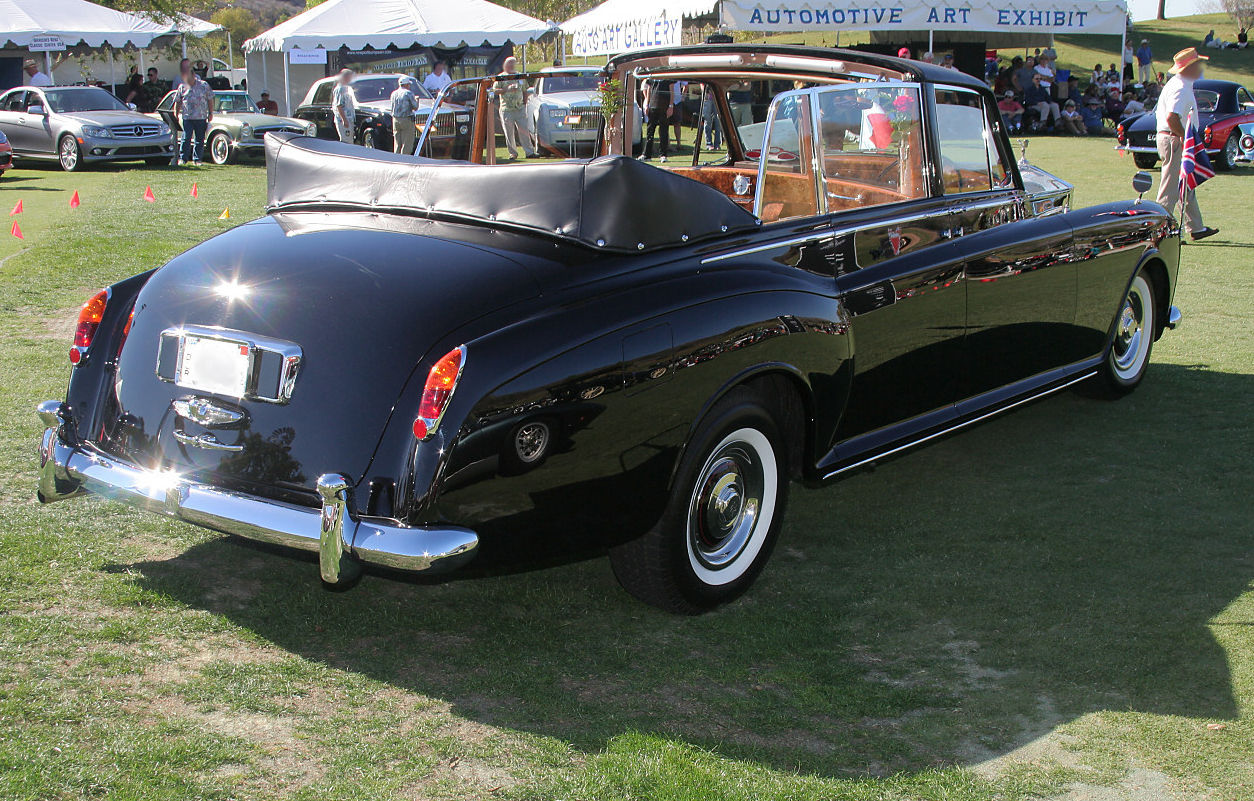|
Zbrojovka Z 18
The Zbrojovka Z 18 was a car produced by Československá Zbrojovka in the 1920s. Derived from the more powerful of two Z 26 designs developed following the Disk, the Z 18 was first produced in 1925. The car was produced in a variety of body types, including a four seat open-top phaeton fitted with one, two and four doors, limousine and landaulet and a two-door roadster. It had a two-stroke two-cylinder engine which enabled the car to reach a speed of . A total of 2,510 vehicles were produced before production ceased in 1930. Background After the failure of the Disk, Zbrojovka was determined that its next car design would be a success. The company had a new engineering team that included the talented František Mackrle and he designed two new designs, both named Z 26, with different engine sizes. The Board liked the more powerful version, but required the prototype to undergo rigorous testing, including driving over across Europe, crossing the Dolomite and Alps and driving a ... [...More Info...] [...Related Items...] OR: [Wikipedia] [Google] [Baidu] |
Zbrojovka Brno
Pre-war Československá zbrojovka, akc.spol. (or a.s.) (Czechoslovak Armory)and post-war Zbrojovka Brno, n.p.(Brno Armory) was a maker of small arms, light artillery, and motor vehicles in Brno, Czechoslovakia. It also made other products and tools, such as typewriters and early computers. In 1946, Zbrojovka started making tractors, which it branded "Zetor" ("Z-tractor"). Zetor continues to make tractors in Brno. History The company was founded in 1918 as a state-owned factory known as the State Armament and Engineering Works. The factory assembled German Gewehr 98 and Austrian Mannlicher M1895 rifles, but later began producing their own. In 1924–1925 a new factory was built, where cars, engines and other machines were produced in addition to rifles and machine guns. In the 1930s, the factory also produced Remington licensed typewriters and Skoda tractors. During the German occupation of Czechoslovakia, Zbrojovka Brno was renamed to Waffenwerke Brunn and produced weapons f ... [...More Info...] [...Related Items...] OR: [Wikipedia] [Google] [Baidu] |
Front-engine, Rear-wheel-drive Layout
In automotive design, a FR, or front-engine, rear-wheel-drive layout is one where the engine is located at the front of the vehicle and driven wheels are located at the rear via a drive shaft. This was the traditional automobile layout for most of the 20th century. Modern designs commonly use the front-engine, front-wheel-drive layout (FF). It is also used in high-floor buses and school buses. Front mid-engine, rear-wheel-drive layout In automotive design, a front mid-engine, rear-wheel-drive layout (FMR) is one that places the engine in the front, with the rear wheels of vehicle being driven. In contrast to the front-engine, rear-wheel-drive layout (FR), the engine is pushed back far enough that its center of mass is to the rear of the front axle. This aids in weight distribution and reduces the moment of inertia, improving the vehicle's handling. The mechanical layout of an FMR is substantially the same as an FR car. Some models of the same vehicle can be classified as ... [...More Info...] [...Related Items...] OR: [Wikipedia] [Google] [Baidu] |
Czechoslovakia
, rue, Чеськословеньско, , yi, טשעכאסלאוואקיי, , common_name = Czechoslovakia , life_span = 1918–19391945–1992 , p1 = Austria-Hungary , image_p1 = , s1 = Czech Republic , flag_s1 = Flag of the Czech Republic.svg , s2 = Slovakia , flag_s2 = Flag of Slovakia.svg , image_flag = Flag of Czechoslovakia.svg , flag = Flag of Czechoslovakia , flag_type = Flag(1920–1992) , flag_border = Flag of Czechoslovakia , image_coat = Middle coat of arms of Czechoslovakia.svg , symbol_type = Middle coat of arms(1918–1938 and 1945–1961) , image_map = Czechoslovakia location map.svg , image_map_caption = Czechoslovakia during the interwar period and the Cold War , national_motto = , anthems = ... [...More Info...] [...Related Items...] OR: [Wikipedia] [Google] [Baidu] |
Brno
Brno ( , ; german: Brünn ) is a city in the South Moravian Region of the Czech Republic. Located at the confluence of the Svitava and Svratka rivers, Brno has about 380,000 inhabitants, making it the second-largest city in the Czech Republic after the capital, Prague, and one of the 100 largest cities of the EU. The Brno metropolitan area has almost 700,000 inhabitants. Brno is the former capital city of Moravia and the political and cultural hub of the South Moravian Region. It is the centre of the Czech judiciary, with the seats of the Constitutional Court, the Supreme Court, the Supreme Administrative Court, and the Supreme Public Prosecutor's Office, and a number of state authorities, including the Ombudsman, and the Office for the Protection of Competition. Brno is also an important centre of higher education, with 33 faculties belonging to 13 institutes of higher education and about 89,000 students. Brno Exhibition Centre is among the largest exhibition ... [...More Info...] [...Related Items...] OR: [Wikipedia] [Google] [Baidu] |
Mid-size Car
Mid-size—also known as intermediate—is a vehicle size class which originated in the United States and is used for cars larger than compact cars and smaller than full-size cars. "Large family car" is a UK term and a part of the D-segment in the European car classification. Mid-size cars are manufactured in a variety of body styles, including sedans, coupes, station wagons, hatchbacks, and convertibles. Compact executive cars can also fall under the mid-size category. History The automobile that defined this size in the United States was the Rambler Six that was introduced in 1956, although it was called a "compact" car at that time. Much smaller than any standard contemporary full-size cars, it was called a compact to distinguish it from the small imported cars that were being introduced into the marketplace. By the early 1960s, the car was renamed the Rambler Classic and while it retained its basic dimensions, it was now competing with an array of new "intermediate" ... [...More Info...] [...Related Items...] OR: [Wikipedia] [Google] [Baidu] |
Phaeton Body
A phaeton is a style of open automobile without any fixed weather protection, which was popular from the 1900s until the 1930s. It is an automotive equivalent of the horse-drawn fast, lightweight phaeton carriage. A popular style in the US from the mid–1920s and continuing into the first half of the 1930s was the dual cowl phaeton, with a cowl separating the rear passengers from the driver and front passenger. Phaetons fell from favour when closed cars and convertible body styles became widely available during the 1930s. Eventually, the term "phaeton" became so widely and loosely applied that almost any vehicle with two axles and a row or rows of seats across the body could be called a phaeton. Convertibles and pillarless hardtops were sometimes marketed as "phaetons" after actual phaetons were phased out. History The term ''phaeton'' had historically described a light, open four-wheeled carriage. When automobiles arrived it was applied to a light two-seater with minim ... [...More Info...] [...Related Items...] OR: [Wikipedia] [Google] [Baidu] |
Limousine
A limousine ( or ), or limo () for short, is a large, chauffeur-driven luxury vehicle with a partition between the driver compartment and the passenger compartment. A very long wheelbase luxury sedan (with more than four doors) driven by a professional driver is called a stretch limousine. In some countries, such as the United States, Germany, Canada, and Australia, a limousine service may be any pre-booked hire car with driver, usually but not always a luxury car. In particular, airport shuttle services are often called limousine services though they often use minibuses. __TOC__ Etymology The word ''limousine'' is derived from the name of the French region Limousin. However, how the name of the region transferred to the car is uncertain. One possibility involves a particular type of carriage hood or roof physically resembled the raised hood of the cloak worn by the shepherds there. An alternate etymology speculates that some early chauffeurs wore a Limousin-style cloa ... [...More Info...] [...Related Items...] OR: [Wikipedia] [Google] [Baidu] |
Roadster (automobile)
A roadster (also spider, spyder) is an open two-seat car with emphasis on sporting appearance or character. Initially an American term for a two-seat car with no weather protection, usage has spread internationally and has evolved to include two-seat convertibles. The roadster was also a style of racing car driven in United States Auto Club (USAC) Championship Racing, including the Indianapolis 500, in the 1950s and 1960s. This type of racing car was superseded by rear-mid-engine cars. Etymology The term "roadster" originates in the United States, where it was used in the 19th century to describe a horse suitable for travelling. By the end of the century, the definition had expanded to include bicycles and tricycles. In 1916, the United States Society of Automobile Engineers defined a roadster as: "an open car seating two or three. It may have additional seats on running boards or in rear deck." Since it has a single row of seats, the main seat for the driver and passenger w ... [...More Info...] [...Related Items...] OR: [Wikipedia] [Google] [Baidu] |
Straight-twin Engine
A straight-twin engine, also known as an inline-twin, vertical-twin, or parallel-twin, is a two-cylinder piston engine whose cylinders are arranged in a line along a common crankshaft. Straight-twin engines are primarily used in motorcycles; other uses include automobiles, marine vessels, snowmobiles, Jet Skis, all-terrain vehicles, tractors and ultralight aircraft. Various different crankshaft configurations have been used for straight-twin engines, with the most common being 360 degrees, 180 degrees and 270 degrees. Terminology The straight-twin layout is also referred to as "parallel-twin", "vertical-twin" and "inline-twin". Some of these terms originally had specific meanings relating to the crankshaft angle or engine orientation, however they are often also used interchangeably. In the United Kingdom, the term "parallel-twin" is traditionally used for engines with a crankshaft angle of 360 degrees, since the two pistons are in the same direction (i.e. parallel to each o ... [...More Info...] [...Related Items...] OR: [Wikipedia] [Google] [Baidu] |
Zbrojovka Disk
Pre-war Československá zbrojovka, akc.spol. (or a.s.) (Czechoslovak Armory)and post-war Zbrojovka Brno, n.p.(Brno Armory) was a maker of small arms, light artillery, and motor vehicles in Brno, Czechoslovakia. It also made other products and tools, such as typewriters and early computers. In 1946, Zbrojovka started making tractors, which it branded "Zetor" ("Z-tractor"). Zetor continues to make tractors in Brno. History The company was founded in 1918 as a state-owned factory known as the State Armament and Engineering Works. The factory assembled German Gewehr 98 and Austrian Mannlicher M1895 rifles, but later began producing their own. In 1924–1925 a new factory was built, where cars, engines and other machines were produced in addition to rifles and machine guns. In the 1930s, the factory also produced Remington licensed typewriters and Skoda tractors. During the German occupation of Czechoslovakia, Zbrojovka Brno was renamed to Waffenwerke Brunn and produced weapons fo ... [...More Info...] [...Related Items...] OR: [Wikipedia] [Google] [Baidu] |
Landaulet (car)
A landaulet, also known as a landaulette, is a car body style where the rear passengers are covered by a convertible top. Often the driver is separated from the rear passengers by a division, as with a limousine. During the first half of the 20th century, taxicabs were often landaulets, with models such as the Austin 12/4 and the Checker Model G and early Checker Model A being a common sight in larger cities. Around the middle of the 20th century landaulets were built for public figures such as heads of state to use for formal processions or parades when they wished to be more visible to large crowds. Open cars are now less frequently used, due to security concerns. History The car body style is derived from the horse-drawn carriage of similar style that was a cut-down (coupé) version of a landau. In British English, the term ''landaulet'' is used specifically for horse-drawn carriages, and ''landaulette'' is used when referring to motor vehicles. Like many other car ... [...More Info...] [...Related Items...] OR: [Wikipedia] [Google] [Baidu] |
Rudge-Whitworth
Rudge Whitworth Cycles was a British bicycle, bicycle saddle, motorcycle and sports car wheel manufacturer that resulted from the merger of two bicycle manufacturers in 1894, Whitworth Cycle Co. of Birmingham, founded by Charles Henry Pugh and his two sons Charles Vernon and John, and Rudge Cycle Co. of Coventry (which descended from a bicycle company founded by Daniel Rudge of Wolverhampton). Rudge motorcycles were produced from 1911 to 1946. The firm was known for its innovations in engine and transmission design, and its racing successes. Their sales motto was "Rudge it, do not trudge it." The company also produced the first detachable wire wheel in 1907, and was known for its knockoff wheels on sports cars; that brand continued well into the 1960s. Wire wheels In the early 1900s John Pugh, son of company founder Charles Pugh and a pioneer motorist, decided that there had to be a better way of dealing with punctured tyres than having to change the tyre with the wheel ... [...More Info...] [...Related Items...] OR: [Wikipedia] [Google] [Baidu] |









.jpg)